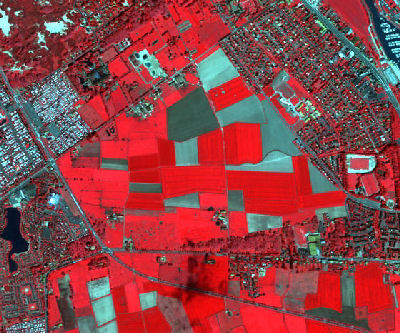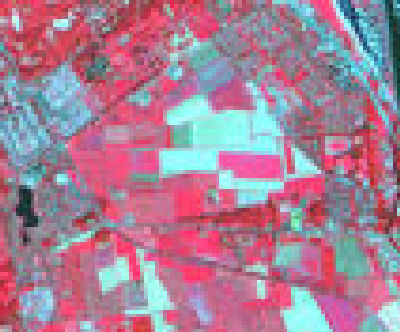3. Crop Identification

© 2005 Space Imaging Europe
Source: Belgian Earth Observation Platform
Remote Sensing data required for crop identification
So how can we be sure that the different near-infrared reflectance between two fields is because the fields are used to cultivate different crops? In order to identify a particular crop, we need to be familiar with its growth cycle (germination, growth, pollination, senescence). Some crops last for a couple of months, other need more than 6 months to complete their growth. In addition we need to know in advance, how the crops reflect the near-infrared at each of their various growth stages.
The two false colour images above, are showing the same fields in Belgium at two different periods, May and August. Within each field the signal is relatively similar, suggesting that a single crop is being used in each field.
Question: Why does the left image appear much more clear than the right one?

© Korea Aerospace Research Institute 2007
Source: Belgian Earth Observation Platform
If we compare the same fields in the two images, we can see that in some cases the signal is different. Fields that appear red (high near-infrared reflectance) are full of vegetation, whereas those that appear blue (low near-infrared reflectance) either have very little or no vegetation at all. In that case the recorded signal is originating from the ground.
Having the knowledge of when each crop is planted and harvested, we can estimate the percentage of vegetation cover through the growth period, assuming no external factors (stress, disease, etc.) affect its growth. With this knowledge and by studying two or more images from the same growth period, we can look at the multispectral reflectance signal at each growth stage and identify what crops are grown in each field.
